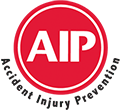Hazard assessments and controls help build safe and healthy workplaces. They are at the core of every organization’s occupational health and safety management system. The hazard assessment and control process provides a consistent approach for employers and workers to identify and control hazards.

Hazard assessments and controls help build safe and healthy workplaces. They are at the core of every organization’s occupational health and safety management system.
The hazard assessment and control process provides a consistent approach for employers and workers to identify and control hazards in the workplace.
It allows everyone to focus their efforts in the right areas, and to develop worker training, inspections, emergency response plans, etc. specific to the hazards at their work sites.
Alberta’s Occupational Health and Safety legislation require employers to conduct hazard assessments, and to either eliminate the hazards identified or put controls in place to protect against them.
Performing hazard assessments could benefit your workplace in a variety of ways. It may inspire improvements in day-to-day operations (e.g. maintenance, work procedures, worker training, process and design, purchasing, housekeeping).
Workers can see how doing simple things like mopping up spills or picking up debris is more important than they might have thought. They become more proactive.
Feeling valued can inspire participation and ownership of workplace health and safety. Hazard assessments will identify areas that need improvement that may have been overlooked in the past which could lead to lower operating costs.
Fewer incidents means fewer claims filed with the Workers’ Compensation Board. Fewer insurance claims means lower annual premiums.
This 4 hour Hazard Assessment Calgary course focuses on the identification, classification, and prioritization of the risks associated with hazards to people, property and the environment.
Course Objectives:
Create an inventory of the tasks performed by each occupation in the workplace
Key terminology pertaining to the Hazard Assessment
Identify the hazards related to each job/task/process
Assess and prioritize the risks associated with each task and hazard
Demonstrate the ability to perform, and differentiate between, formal and specific hazard risk assessments, inspections and task observations
Describe the different methods of hazard / risk control
Define rules, procedures, practices and codes of practice
Describe the hazard / risk control process
Describe the types of inspections
Describe how to conduct inspections and record observations
Identify methods used to encourage hazard reporting
The provision of appropriate health and safety training is an integral part of all health and safety programs and is a key component of due diligence in the workplace. Employers have an obligation.
To properly train their employees and supervisors to ensure that they are competent to perform their jobs, recognize the hazards of the job and understand how to protect themselves from these hazards.
© 2025 coursetakers.com All Rights Reserved. Terms and Conditions of use | Privacy Policy